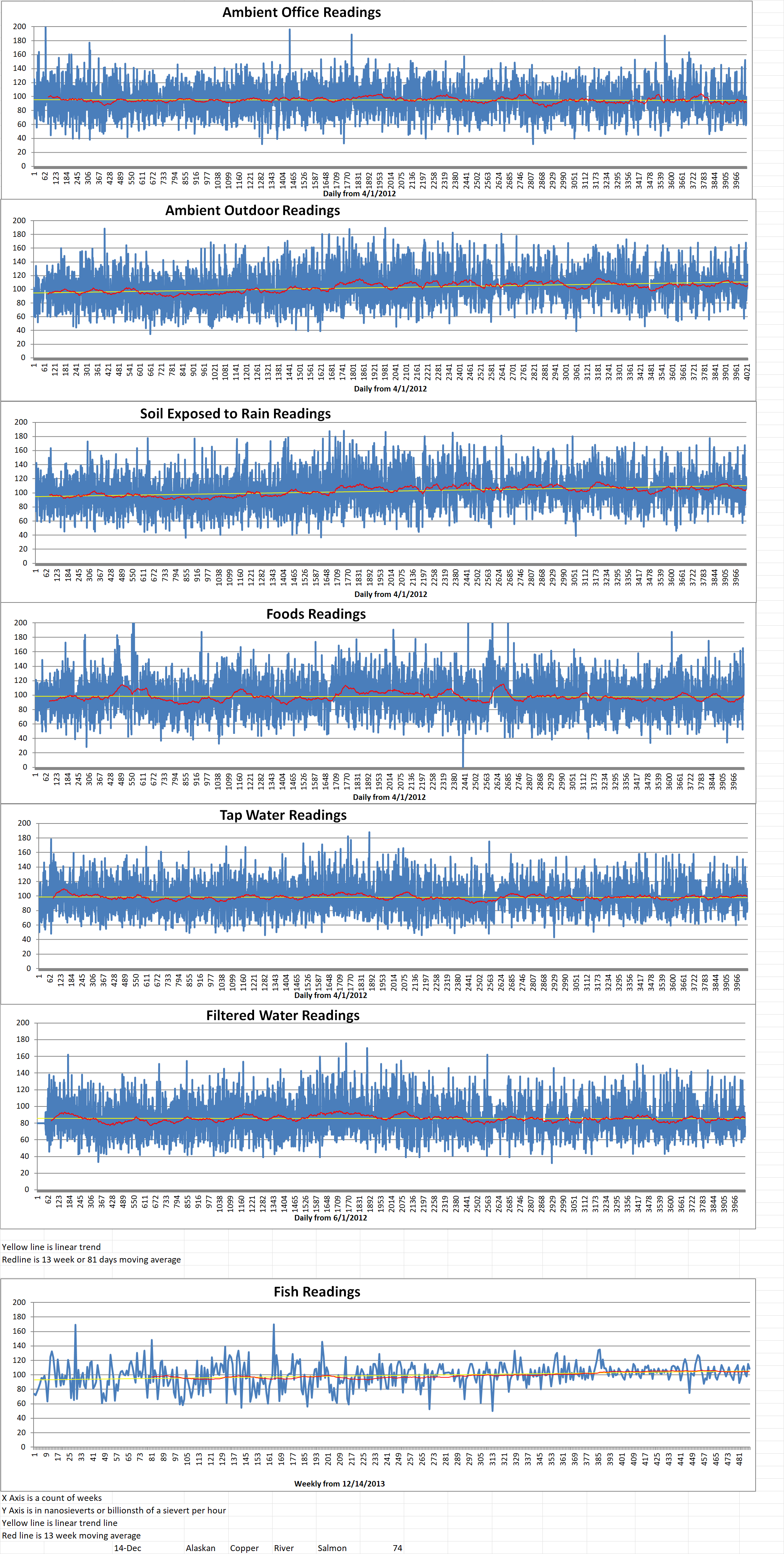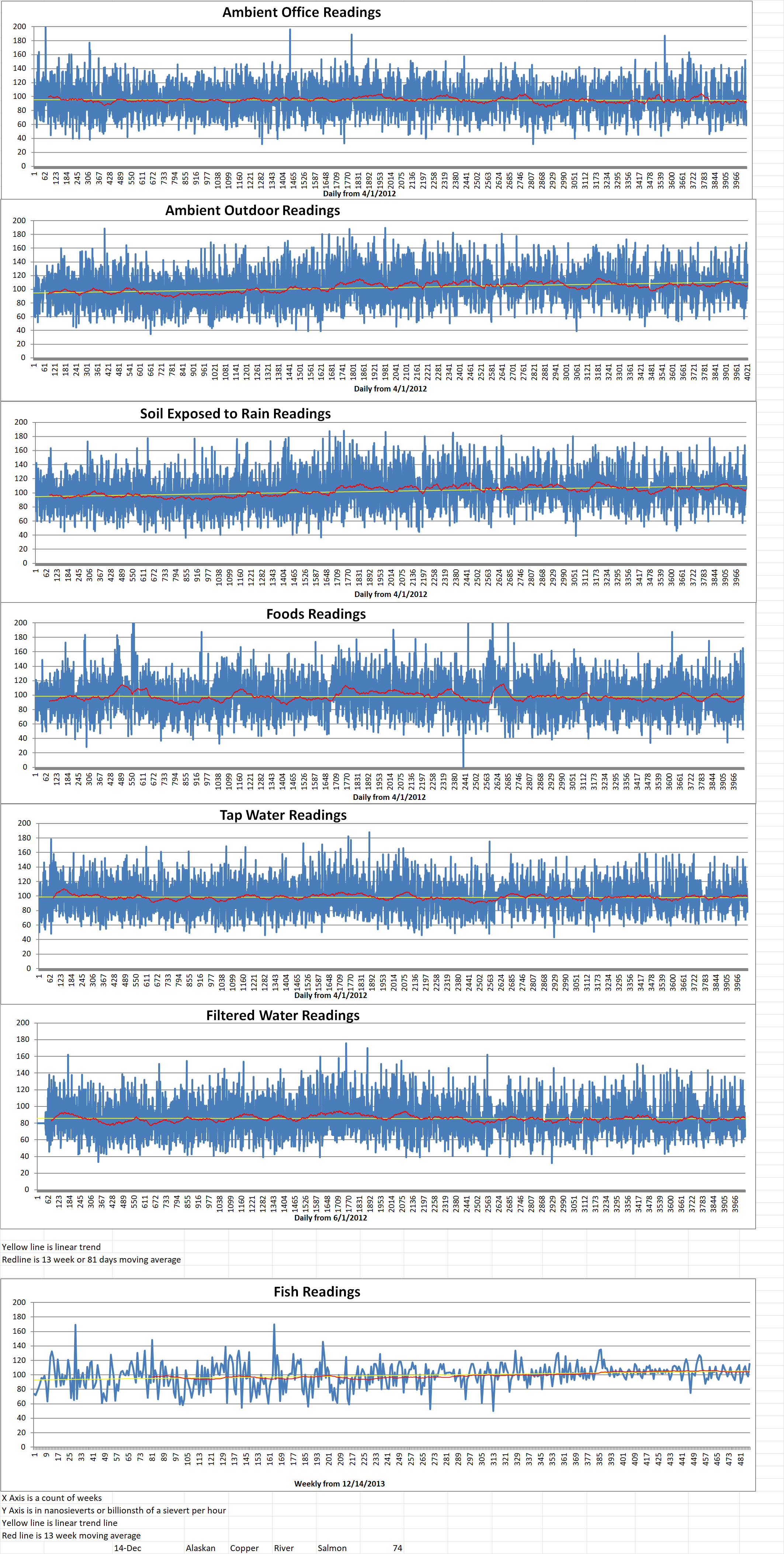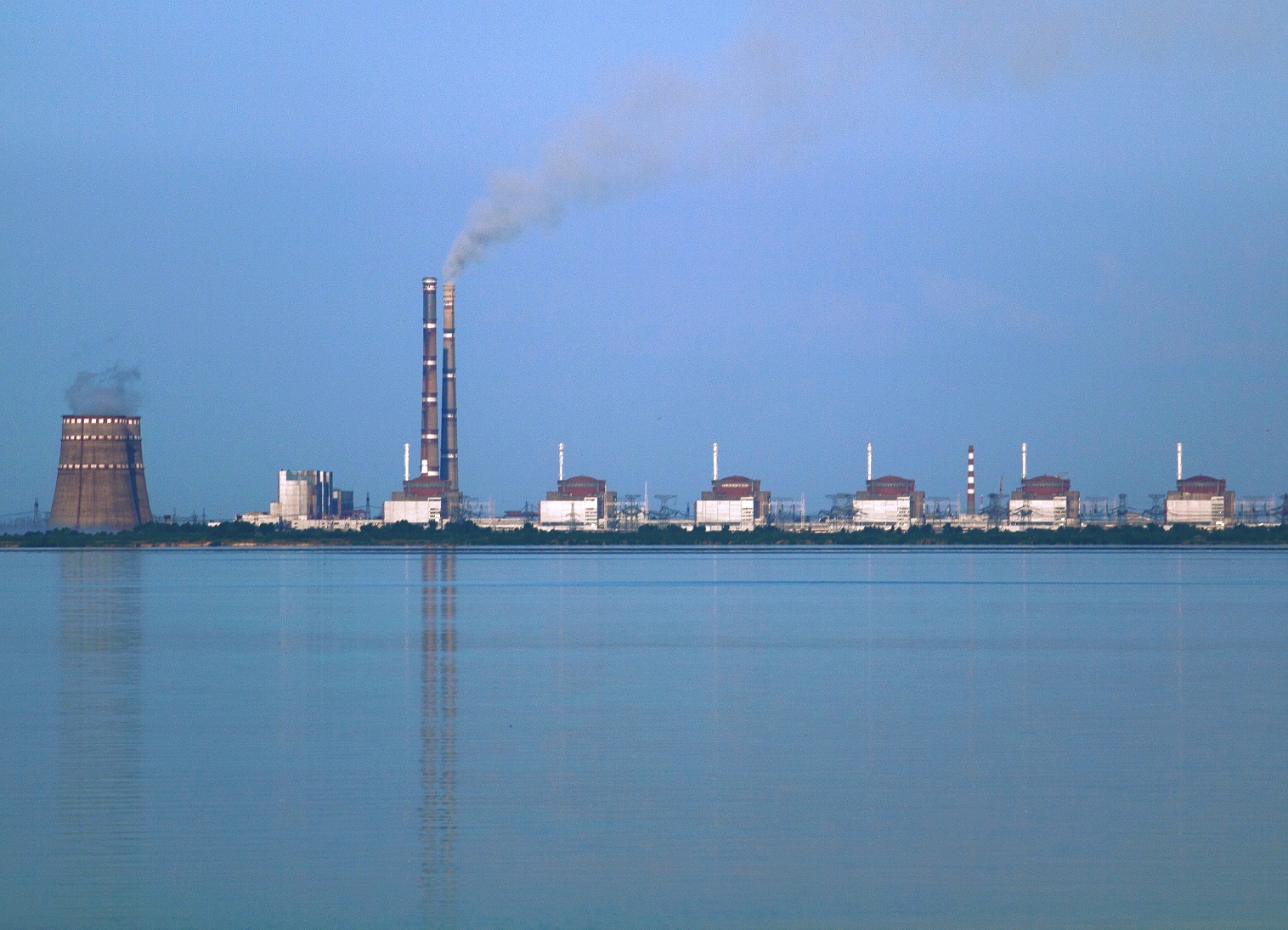Blog
-
Links for 09 Jul 2023
Investment in fusion has reached USD6.21 billion, says FIA world-nuclear-news.org
Kim Jong Un vows to upgrade North Korea’s nuclear capability after missile test foxnews.com
Lavrov calls transfer of F-16 fighter jets to Ukraine ‘nuclear threat’ news.yahoo.com
Biden: China has warned Putin against using nuclear weapons news.yahoo.com
-
ADMIN NOTE
Due to multiple problems with hardware and software including serious system crash and damaged hard drive, I am unable to include radiation readings until September 8, 2023.
-
Nuclear News Roundup July 08, 2023
Years Later, Japan Is Still Recovering From the Tragedy That Shook Fukushima fordors.com
ITER component removed for repairs world-nuclear-news.org
Grouting operations resume at UK LLW repository site world-nuclear-news.org
GSE to assist in US control room upgrade project world-nuclear-news.org
-

Geiger Readings for July 08, 2023
Ambient office = 99 nanosieverts per hour
Ambient outside = 119 nanosieverts per hour
Soil exposed to rain water = 121 nanosieverts per hour
Seranos pepper from Central Market = 115 nanosieverts per hour
Tap water = 87 nanosieverts per hour
Filter water = 76 nanosieverts per hour
Dover Sole from Central = 98 nanosieverts per hour
-

Nuclear Reactors 1244 – Westinghouse Pursues License For eVinci Microreactor In Canada
Westinghouse Electric Company has submitted the first set of documents to the Canadian Nuclear Safety Commission (CNSC) required for the pre-licensing vendor design review (VDR) of its eVinci microreactor.
The CNSC offers the VDR as an optional service to provide an assessment of a nuclear power plant design based on a manufacturer’s reactor technology. It is not a regular part of the licensing process for a new nuclear power plant. However, it aims to verify the acceptability of a design with respect to Canadian nuclear regulatory requirement and expectations.
The VDR process consists of three phases. The first phase involves a pre-licensing assessment of compliance with regulatory requirements. The second phase is an assessment of any potential fundamental barriers to licensing. The third phase is a follow-up allowing the vendor to respond to findings from the second phase.
Westinghouse applied in February of 2018 to the CNSC for a VDR of the eVinci design. The VDR process was initiated following the signing of a service agreement between the company and the CNSC in September of 2022. Westinghouse is executing both the first and second phases of the VDR as a combined program.
Westinghouse has now provided four Phase 1 Focus Area sets of documents to the CNSC. More than forty submissions will be filed with the CNSC during Phase 1 and Phase 2 of the VDR process.
Westinghouse said, “The submissions will enable early identification and resolution of potential regulatory and technical issues as the eVinci technology advances through the design process.”
Westinghouse is planning to submit reports for joint review under the Memorandum of Cooperation between the CNSC and the U.S. Nuclear Regulatory Commission (NRC). The reports will focus on selected design aspects of the eVinci microreactor with the primary objective of establishing alignment of regulatory expectations as well as developing a common understanding of them.
Westinghouse submitted a pre-application regulatory engagement plan (REP) to the NRC for the microreactor in December of 2021 The submission will detail the planned pre-licensing application interactions with the regulator. An REP assists reactor developers’ early interactions with the NRC staff. It can reduce regulatory uncertainty and add predictability to licensing advanced technologies.
In February of 2023, Westinghouse filed a Notice of Intent to submit key licensing reports for eVinci to the NRC and the CNSC. The reports will be used for a joint review including a common set of requirements for the classification of systems, structures and components for the microreactor. This approach will allow deployment of a standard design in both the U.S. and Canada.
The eVinci microreactor is described as a “small battery” for decentralized generation markets. It will also be available for microgrids such as remote communities, remote industrial mines and critical infrastructure. The nominal five megawatt electrical heat pipe reactor has a heat capability of fourteen megawatts thermal. It features a design that Westinghouse says provides competitive and resilient power as well as superior reliability with minimal maintenance. The eVinci is small enough to allow standard transportation methods. This makes it perfectly suited for remote locations and rapid, on-site deployment. These features, Westinghouse says, make it a viable option for places such as mines and off-grid communities. -
Nuclear News Roundup July 07, 2023
Editorial: Sweden embraces nuclear energy thebrunwicknews.com
Cuba Rejects Entry of US Nuclear Submarine in Guantanamo telesurenglish.net
Indonesian diplomat says nuclear weapons put Asia at a ‘miscalculation away from apocalypse’ foxnews.com
Nuclear power too expensive and slow to be part of Australia’s plans to reach net zero, study finds theguardian.com
-

Geiger Readings for July 07, 2023
Ambient office = 79 nanosieverts per hour
Ambient outside = 106 nanosieverts per hour
Soil exposed to rain water = 106 nanosieverts per hour
Red bell pepper from Central Market = 143 nanosieverts per hour
Tap water = 91 nanosieverts per hour
Filter water = 72 nanosieverts per hour
-

Nuclear Reactors 1243 – Ukraine Fears That Russia May Deliberately Blow Up The Zaporizizhia Nuclear Power Plant.
Located in southeast Ukraine, Zaporizhzhia is the biggest nuclear power plant in Europe. It normally produces about twenty percent of Ukraine’s electricity. The plant was captured by Russian forces in March of 2022. At the time of its capture, it was feared that the Russian forces would destroy the plant to halt a Ukrainian advance.
Zaporizhzhia has been operational since 1984. It sits on a half square mile site on the banks of the Kakhovka reservoir. Each of the six reactors in the plant is capable of generating one gigawatt. The average nuclear power plant in the U.S. sits on a one square mile site and generates one gigawatt of electricity. Water from the Kakhovka reservoir is critical for the cooling and operation of the plant. Any spent nuclear fuel from the Zaporizhzhia reactors is stored in cooling pools for up to five years to give the residual energy and radioactivity time to decrease so it can be handled.
The Zaporizhzhia plant has multiple safety precautions in place. According to the International Atomic Energy Agency (IAEA), the affects of the Russian attack and occupation have not affected the essential equipment or caused radiation levels to change. U.S. officials have also stated that there is no indication of elevated radiation levels at the plant.
If an explosion occurred at Zaporizhzhia, the results would be catastrophic. Ukrainian officials have said that there is a “real threat of nuclear danger”. Ukrainian foreign minister Dmytro Kuleba warned that if Zaporizhzhia blows up, “it will be 10 times larger than Chernobyl”. The resulting blast would kill thousands of people in the area around the plant. Depending on weather conditions, radiation could be carried further into Europe. Fallout could even reach London. The chances of that are unlikely because the design of the reactors contains many safety features.
The Russian occupying forces have been using Zaporizhzhia as a military base. Vehicles were parked around the reactors. Stocks of supplies and ammunition have also been stored at the plant. There has been fighting between Ukrainian forces and Russian occupiers around Zaporizhzhia. Each side has accused the other of endangering the plant. The Ukrainians fear that the Russians might blow up the plant to deny Ukraine the electricity that it produces. The Russians claim that the Ukrainians might blow up the plant and try to blame the Russians.
Recently, the Russians occupying the plant have been leaving. The Ukrainians have been sounding the alarm that the Russians are placing explosives in and around the plant. They may intend to remotely detonate the explosives after they leave and claim that it was the Ukrainian forces who occupied the abandoned plant who either intentionally or unintentionally caused the plant to explode.
NATO recently passed a resolution that said that if Russia or Russian-aligned nations caused an explosion that spread radioactive materials into NATO nations, then NATO would consider that a nuclear attack by Russia on NATO. Russia might blow up Zaporizhzhia as a last-ditch desperation move, believing they can blame Ukraine and escape retaliation by NATO. The current situation is extremely dangerous. -
Nuclear News Roundup July 06, 2023
Russia Successfully Tests Secret Nuclear-Powered ‘Poseidon’ Torpedo newsweek.com
N Korea slams US move to deploy nuclear submarines to peninsula Aljazeera.com
Trump Administration Officials Were Legitimately Worried About Trump Provoking Nuclear War With North Korea vanityfair.com
Study into deep borehole disposal costs at Krško world-nuclear-news.org
